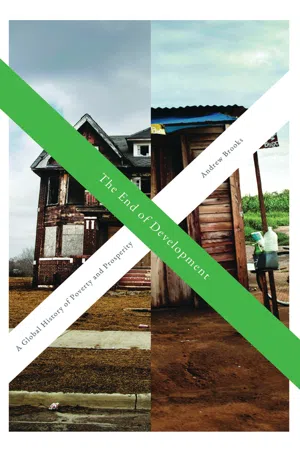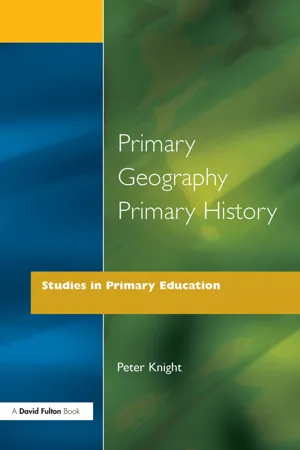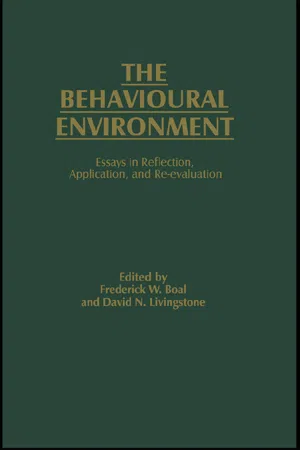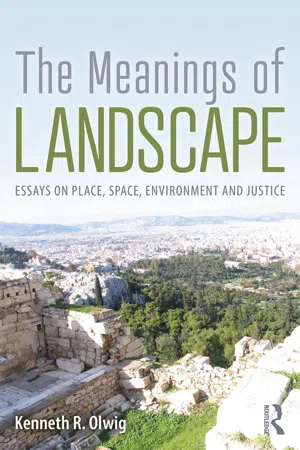Environmental Determinism
Environmental determinism is a geographical theory that suggests that human behavior and societal development are primarily shaped by the physical environment. This perspective argues that climate, topography, and natural resources dictate cultural and economic practices. While influential in the past, environmental determinism has been widely criticized for oversimplifying the complex interactions between humans and their environment.
6 Key excerpts on "Environmental Determinism"
- eBook - ePub
Geographic Thought
A Critical Introduction
- Tim Cresswell(Author)
- 2012(Publication Date)
- Wiley-Blackwell(Publisher)
...Many of Davis’s students were not geomorphologists. Ellsworth Huntingdon was also one of his students. Davis’s evolutionary ideas were easily translated into Environmental Determinism. Environmental Determinism Perhaps the key problem that lay at the heart of geography in the nineteenth and early twentieth centuries was the relationship between the natural and human worlds. This issue had clearly concerned the proto-geographers of the classical and medieval worlds which had seen the development of elaborate climatic zones in which different peoples were said to display different attributes depending on the climate they had to contend with. The issue of “people–environment” relationships continues to inhabit the heart of the discipline up to the present day. This label is often used to describe a significant strand of learning in North American departments of geography. Scholars describe themselves as “people–environment” geographers. Exactly how people relate to the natural world is currently a contested question, with answers ranging from an environment that determines human life to one in which nature itself is “socially constructed.” But if we go back 100 years there was one strand of thinking that was dominant – Environmental Determinism. When an explanation is deterministic it is one in which one set of things directly causes, in a linear and one-directional way, another set of things. Environmental Determinism is the belief that the natural environment causes and explains the human/cultural world. David Livingstone has argued that a “moral economy of climate” formed a key part of an imperial and racist imagination right up until the middle of the twentieth century. Over and over again, readers of geography journals, as well as thousands of school children and university students reading textbooks, were subjected to the idea that climatic regions were reflected in a moral topography of race...
- eBook - ePub
The End of Development
A Global History of Poverty and Prosperity
- Andrew Brooks(Author)
- 2017(Publication Date)
- Zed Books(Publisher)
...In these two cases the exceptional circumstances are associated with Australian and Swiss culture, history and politics, which are all products of social interactions rather than the outcome of particular natural environments. So the signs point towards society as being more important than nature. The brief examples discussed above are simplifications of complex geographical realities, but they begin to demonstrate some of the problems of ‘Environmental Determinism’: the idea that nature controls humans. The closer we examine the connections between the environment and present day patterns of wealth and poverty, the more we begin to see exceptions to the idea that the natural world determines society. Relationships between geographical space on the one hand, and human welfare on the other, begin to breakdown. Environmental Determinism is a popular, intuitive and elegantly simple explanation for inequalities, but one that is almost entirely wrong. 7 It is incorrectly used both to account for the present day wealth gap between the Global South and Global North, as well as to explain the earlier division of humanity between ‘haves and have-nots’ before the emergence of industrial society. 8 The disparity in contemporary livelihoods will be addressed in later chapters; for now early human history is the focus. Before the Holocene humans were constrained in their ability to live within environments, but unlike any other species Homo sapiens have shaped the world around them to such an extent that there no longer exists a world outside of the effects of human culture that could determine society...
- eBook - ePub
- Peter Knight(Author)
- 2013(Publication Date)
- Routledge(Publisher)
...Chapter 5 The Nature of Geography The discipline Different ideas about the nature of a subject, about its constituent elements, concepts, ways of establishing propositions, procedures and criteria of value lead to different ways of teaching it. The suggestion that school subjects should mirror, albeit imperfectly and dimly, the mature disciplines by introducing children to those disciplines’ characteristic ways of thinking and working, has only confirmed this link between the teacher’s understanding of the adult study and the way in which the school subject is handled. So, consideration of primary geography needs to be related to an understanding of the academic discipline, not on the assumption that the former must perfectly reflect the latter, but rather on the assumption that they are both part of the same family, having things in common as well as things which distinguish them from each other. One of the principal tasks of geography, in its early days was, in the words of Bradbeer (1991, p.13) ‘to synthesise the growing body of information about the earth, its natural features and its peoples’. Here physical geography and human geography met, and no-where was this better seen than in the USA where geography was dominated by Environmental Determinism, that is, by the view that physical geography shaped human life and that geography was a scientific account of the regularities in this relationship (Smith, 1989). In the inter-war years this gave way to regional studies, or chorology. Regional studies, in which all knowledge of a place was drawn together, were defined as geography’s distinctive feature but since these studies tended to be descriptive, they were faulted for providing ‘no more than a superficial analysis, and the division of labour within the discipline, whereby people specialised on different areas of the earth was both inefficient and ineffective’ (Johnston, 1991, p.51). The definition of a ‘region’ was also problematic...
- eBook - ePub
The Behavioural Environment
Essays in Reflection, Application and Re-evaluation
- F.W. Boal, D.N. Livingstone, F.W. Boal, D.N. Livingstone(Authors)
- 2003(Publication Date)
- Routledge(Publisher)
...However, we do not need to share that particular rendition of the geographical tradition to remain committed to the necessity of keeping the objective and subjective worlds-the worlds of fact and value-bound together. In our own day this as often as not takes the form of a call to keep human agency and social structure in conceptual tandem. Accordingly the notion of the behavioural environment would alert us to the dangers in interpretative systems that give explanatory privilege either to structure or to agency, to naturalism or to humanism, to environment or to culture, to nature or to mind. To be sure, the behavioural environment idea as originally formulated cannot be conceived as providing philosophical solutions to particular geographical problems. As we have said, it does not imply any specific method for interpreting, interrogating, or reconstructing behavioural environments, and still less does it offer criteria for warrants to knowledge claims about perception. What it does is to remind us that we are subjective agents in an objective world, and to warn us that to underestimate the human in geography is as dangerous as to overplay it. Notes 1 R.J.Chorley, ‘Geography as human ecology’, in R.J.Chorley (ed.), Directions in Geography (Methuen, London, 1973), p. 158. 2 This analysis owes much to discussions with the American philosopher Alvin Plantinga. 3 See, for example, S.Rose, ‘The roots and social functions of biological reductionism’, in A.Peacocke (ed.), Reductionism in Academic Disciplines (Society for Research into Higher Education and NFER-Nelson, Guildford, 1985), pp. 24–42. 4 So, for example, N.Goodman, Ways of Worldmaking (Hackett Publishing Co., Indianapolis, 1978). 5 C.Rose, ‘The problem of reference and geographic structuration’, Environment and Planning D: Society and Space, vol. 5 (1987), p. 104. 6 See the analysis by A.Plantinga, ‘How to be an anti-realist’, Proceedings and Addresses of the American Philosophical Association, vol...
- eBook - ePub
The Essential Ian McHarg
Writings on Design and Nature
- Ian L. McHarg, Frederick R. Steiner(Authors)
- 2013(Publication Date)
- Island Press(Publisher)
...3 Ecological Determinism (1966) During the 1960s, McHarg directed his own efforts as well as those of his graduate students toward ways ecological principles could be applied to landscape architecture and environmental planning. This paper was presented at a conference convened by The Conservation Foundation in April, 1965, at Airlie House, Warrenton, Virginia. Subsequently it appeared in the book Future Environments of North America edited by F. Fraser Darling and John P. Milton and published by The Natural History Press (the eventual publisher of Design with Nature). Darling, a distinguished British ecologist, pioneered the study of human ecology in the Scottish highlands. He showed how small technological innovations changed human settlements and landscapes. This paper is an early discussion of McHarg’s theory for an ecological planning method. Introduction In the Western world during the past century transformation of natural environments into human habitats has commonly caused a deterioration of the physical environment. However, much improvement to the social environment has been accomplished in these transformations; city slurb and slum are less attractive physical environments than forest, field, and farm that preceded them. In earlier times, because of the slow rate of change, unity of materials, structural method and expression, this was not so. Few among us regret the loss of ancient marshes on which Venice and Amsterdam sit, the loss of even more ancient hills which now seat Athens and Rome. History testifies to human adaptations, accomplished with wisdom and art, which were and are felicitous. Yet the principles which ensured these successes are inadequate for the speed, scale, and nature of change today. In the seventeenth century it required a third of the treasury of France, the mature life of Louis XIV, and the major effort of André Le Nôtre to realize Versailles...
- eBook - ePub
The Meanings of Landscape
Essays on Place, Space, Environment and Justice
- Kenneth R. Olwig(Author)
- 2019(Publication Date)
- Routledge(Publisher)
...Geography has thus gone from being a field incorporating a strong historical and humanistic element in a broad concern with landscape and environment, to becoming by the end of the twentieth century a field largely dominated by the natural sciences mindset of “spatial science,” as discussed in Chapters 8 and 9. There has, however, been an ongoing humanistic counterreaction to this development. It has been fostered by geographers linked often to the study of geography as a nexus of history, anthropology, and geography associated with the landscape geography of Carl Sauer at the University of California Berkeley and the writings of John B. Jackson. These included Yi-Fu Tuan, David Lowenthal, Clarence Glacken, and Edmunds Bunkse, and their work has been furthered by a following generation of geographers, not all of whom are humanistic, including Denis Cosgrove, Steve Daniels, Tim Cresswell, Mike Jones, Tomas Germundsson, Tom Mels, and Don Mitchell. It is from academic and personal contact with these geographers that much of the inspiration for this book has been derived. It is not only geographers, however, who have contributed to the historical, philological, and generally humanistic understanding of landscape that has inspired this book. This book also owes a personal and intellectual debt to, among the others, the anthropologists Tim Ingold, Werner Krauß, and Karen Fog Olwig, the landscape architects Anne Whiston Spirn and Shelley Egoz, the natural historian Graham Bathe, and the historians Bill Cronon and Andrew Humphries. The chapters in brief The first chapter is concerned with the relationship between the predominant modern meaning of landscape as spatial scenery and the historically original meaning of landscape as a polity and its places that ideally form a nexus of community, justice, nature, and environmental equity...





